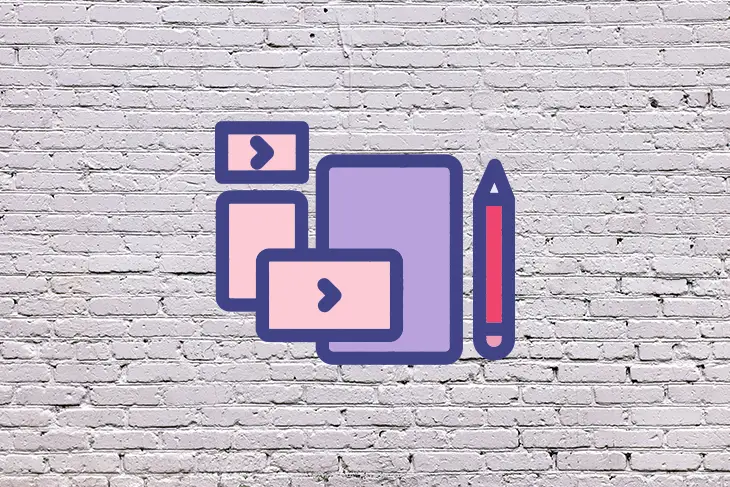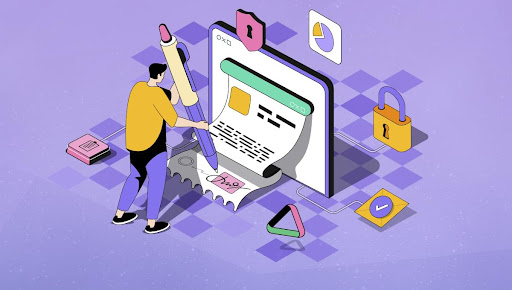Digital development is unmatched today. Every day, technology evolves.
Given this rapid pace, how should you, as a product manager, know what technology is most suitable for your product, what features have become the industry’s norm, and what people expect from your product?
In this guide, we’ll show you how to build and test a prototype to help you save time and resources on unnecessary ideas.
Table of contents
What is a prototype?
A prototype is a simple visualization of the product to test the concept.
There are thousands of new ideas that originate every day to solve a particular problem. Executing an idea can be a long and expensive process. Alongside this, no one can, with absolute certainty, say that their vision will work or that users will ultimately want and use their products. Sometimes even great ideas fail because they are overly complicated to use or understand.
Agile development pivots around faster time to market, learning, integration, and adaptability. A prototype is built on the principle of failing fast, freely experimenting, and learning while trying to reach the desired result. Finding failures propels learning and optimizes solutions to reach your goal.
What is the primary purpose of prototyping?
Teams build prototypes with varying degrees of fidelity to capture design concepts and test them on users. You can refine and validate your designs with prototypes to ensure that you are building the right thing your user will use, without wasting time and resources. Because of this, prototyping is a cost-effective way to learn from failure, promoting innovation and creativity.
In the product discovery phase, it’s plausible that the product team has numerous compelling ideas. However, there are many initial uncertainties (e.g., technical feasibility, seamless process fit, etc.). The best way to avoid letting uncertainties drive the decision is to test the concept and learn about the possibilities. Prototyping provides an opportunity to test the wildest, craziest ideas, and decide whether to drop them or push them forward.
What are the 4 methods of prototyping?
You can select different methods of prototyping based on the need and the goal of the insights gained.
The four main methods of prototyping are:
- Feasibility prototypes
- Low-fidelity user prototypes
- High-fidelity user prototypes
- Live-data prototypes
1. Feasibility prototypes
To test the technical possibility of the concept. The feasibility prototype is built with a precise granularity to the proposed feature. Next, the development team creates a high-level architecture description and writes enough code to test the technical challenges and possibilities of the concept.
This prototype then serves as a ground for engineering the entire product. A feasibility prototype is usually created while building new algorithms, new approaches, or new structures to test attainability and push boundaries
2. Low-fidelity user prototypes
To test the usability of the flow. Low-fidelity user prototypes are most like wireframes created in tools like Figma or Invision by the UX/product designers. This prototype aims to identify any user issues early on and test how the feature works and fits in the entire process
3. High-fidelity user prototypes
A realistic-looking prototype that takes a bit more time and resources, but ensures stimulation per the final product. These prototypes are to test concepts that are non-negotiable but can be adapted in a better way.
For example, when companies wanted to try virtual reality before people knew about VR, they couldn’t explain it to people with wireframes and sketches and get their feedback. Instead, they had to develop a high-fidelity user prototype with the goal of testing whether the user would like the product.
4. Live data prototypes
A prototype embedded with analytical tools to collect live data and actions from real users. Live-data prototypes help when you have a product and want to see if the customer will be interested in the new feature.
For example, if you want to include a virtual tryout feature for your shopping app, you can release a designed page explaining the new feature and ask the user to subscribe if they want to use it. You add the tracking code to the design and release it to a few actual customers (beta testers) to test the concept’s likeability. This way, you get insight into your idea, making it clear whether it’s worth the investment
5 ways to create prototypes
Here are five of the most common ways to build out a prototype:
1. Wireframes
As agile ways of working progress, many tools are introduced to help with the process. Similarly, numerous tools are available to create simple prototypes and tests. Some of these tools are so intuitive that anyone, even on a beginner level, can use them to create a simple wireframe to test their ideas. Figma and Invision are two user-friendly tools that can be used with many things pre-structured
Subscribe to our product management newsletter
Get articles like this to your inbox
2. Slides
A prototype created with slides with some shapes, colors, and texts. One can make a few design concepts on slides and present them to stakeholders for a common understanding. As the famous saying goes, a picture is worth a thousand words. In the early stages, when there is a need for internal buy-in, the best way to present a concept is to create some basic designs in slides. It is easier to sell and bring people on the same page while showing some pictures instead of plain text and charts
3. Sketch on paper
A fundamental handmade design with pen and paper. An illustration prototype can be used in a test format called guerilla testing. It’s the simplest form of testing to validate high-level ideas and understand potential problems. This test can be done anywhere on the street, in a mall, or wherever you find your target group
4. Interactive frontend
A minimum coded frontend where the user can interact with the design, but the response is predefined and not dynamic from any backend. This prototype helps the development process to identify the flow, allowing the developers to identify the technical solution and needs early on. You can also use this prototype with the end user to identify problems with the flow (e.g., if the user struggles to navigate your app to fill out a form for a reclaim request.
5. Conceptual videos
Videos are usually created to generate interest and demonstrate how exceptional the new product will be. The purpose of a video prototype can be to get buy-in, potential investment, or validation. Conceptual videos focus on vision at a high level to create anticipation. This prototype can also be used as a guide while creating detailed features during the development phase
How to choose the right prototype
As we have seen, there are several different types of prototyping and several options for creating prototypes. Therefore, understanding which method will suit your product at a given time is essential.
When deciding which prototyping method to employ, you’ll need to do the following:
- Identify the lifecycle stage of your product
- Identify the need to create a prototype (how, what, or why)
- Define the outcome/results from the prototype
1. Identify the lifecycle stage of your product
There are three main stages in a product lifecycle:
- Early stage — When the idea originates and there is no existing product or user base
- Growth stage — When the product expands and gains a substantial number of users
- Maturity stage — When the product reaches its peak and provides the best possible service to users
2. Identify the need to create a prototype (how, what, or why)
Your particular requirements will inform your choice of the most suitable prototyping method. The most common needs while choosing to create prototypes are:
- Gaining insight into how the existing product and features are utilized and perceived by the user. The need here is to know the how
- Validating ideas for a new feature and concept to identify the potential next development. The need here is to identify what to build
- Finding potential issues with an existing feature. The need is to identify the why
3. Define the outcome/results from the prototype
The most crucial step is choosing the method and the type of prototype that will help you achieve your goals and objectives.
Let’s look at a product team’s top goals for the prototype stage:
Validate customer need
The goal is to find the market’s most demanded or accepted feature. This helps to avoid wasting resources on building things that might not result in the company’s desired effect
Test technical feasibility and set your course
The idea might be fantastic, but the organization might need to upgrade their technical foundation to achieve the goal. There might be a shift in the market (e.g., artificial intelligence integration), which requires you to identify the course of action needed for your product to be ready to adapt changes in technology
Improve your product’s aesthetics to meet customers’ standards
When you already have a product, your users might still need help understanding it or be unsatisfied with the current iteration. Your goal here is to discover how to make it user-friendly to create the best experience.
One example of a concrete goal here can be improving the Net Promoter Score (NPS)
Gain stakeholder buy-in
Showcasing for stakeholders allows you to align on the expectation and to receive budget sanctions. The goal is to sell your idea internally through data backup and testing. It is specifically applicable when the management is reluctant to change and assign a budget for the need
Guide the development team to build the right product
The goal is to set a vision and provide a guiding principle to everyone involved in development. When working on details, it’s often easy to lose sight of why. You can build a prototype to keep everyone on the same page. This can serve as a map for seeing where products deviate from the vision
Conclusion
Prototyping is an effective method to validate ideas, test feasibility, secure buy-in, and create alignment. There are different prototyping methods that are suitable for different needs. However, once identified correctly, prototyping can help save time and resources while creating value early in product discovery.
Prototyping allows us to build the right thing while maintaining speed and avoiding wastefulness. It also validates with actual data, allowing us to learn and iterate, which helps bring the needed resources together to evolve new technology and push boundaries.
Featured image source: IconScout
LogRocket generates product insights that lead to meaningful action
LogRocket identifies friction points in the user experience so you can make informed decisions about product and design changes that must happen to hit your goals.
With LogRocket, you can understand the scope of the issues affecting your product and prioritize the changes that need to be made. LogRocket simplifies workflows by allowing Engineering and Design teams to work from the same data as you, eliminating any confusion about what needs to be done.
Get your teams on the same page — try LogRocket today.
Source link







Leave a Reply